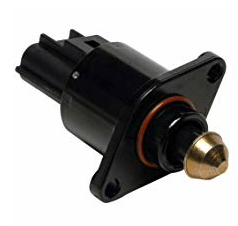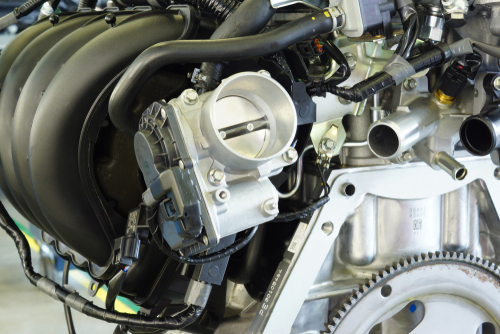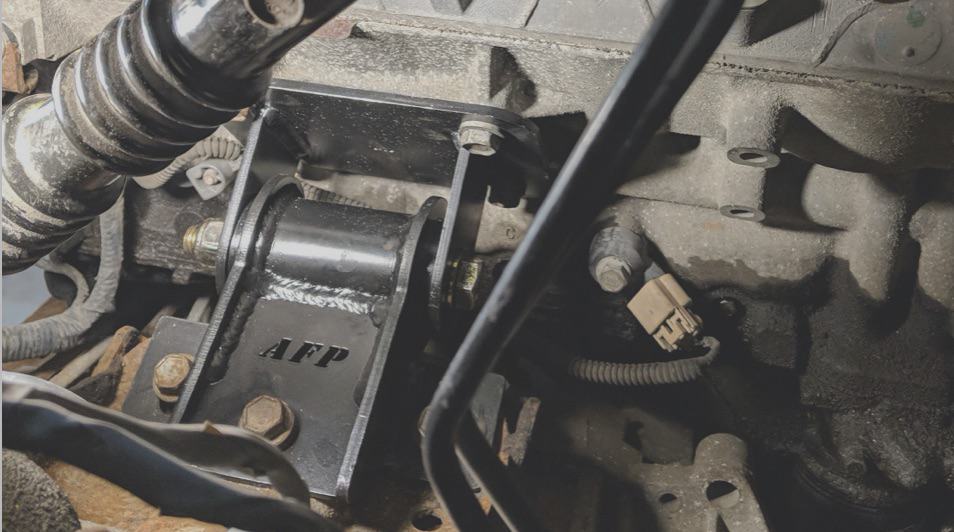Is your car acting up? You might be facing the P0026 code, which stands for “Intake Valve Control Solenoid Circuit Range/Performance (Bank 1).”
Don’t worry, it’s not as complicated as it sounds. This code indicates that your vehicle’s engine control module has detected an issue with the intake valve control solenoid on the first bank of cylinders.

When your car’s computer throws this code, it’s essentially saying that the intake valve control solenoid isn’t responding correctly to commands.
This little gizmo is crucial for optimizing engine performance and fuel efficiency. If it’s not working right, you might notice some changes in how your car runs.
You might be wondering what caused this pesky code to pop up. Well, it could be a few things – from a faulty solenoid to wiring issues, or even low oil pressure.
Don’t fret, though. With a bit of know-how and some elbow grease, you can get to the bottom of it.
Let’s dive into the nitty-gritty of P0026 and get your ride back in tip-top shape!
Key Takeaways
- The P0026 code signals a problem with the intake valve control solenoid’s performance on Bank 1 of your engine.
- Symptoms may include reduced fuel economy, rough idling, and decreased engine performance.
- Proper diagnosis involves checking the solenoid, wiring, and oil quality, potentially requiring professional assistance.
Understanding the Basics of P0026 Code
Hey there, grease monkey!
Ever had your check engine light come on and thought, “Oh great, what’s wrong with my baby now?”
Well, if you’ve got a P0026 code, buckle up because we’re about to take a little trip down Diagnostic Lane.
P0026 is one of those pesky diagnostic trouble codes that can make your head spin faster than a turbocharger.
It’s all about your intake valve control solenoid circuit on Bank 1 throwing a tantrum.
Your trusty engine control module (ECM) is like that nosy neighbor who always knows when something’s not right.
When it detects that your camshaft isn’t playing nice with the desired position, it lights up your dashboard like a Christmas tree.
Now, before you start sweating bullets, remember that fault codes are just your car’s way of saying, “Hey, I need some attention!”
P0026 could be caused by a few things:
- A faulty intake valve control solenoid
- Wiring issues (because who doesn’t love a good electrical mystery?)
- Low oil pressure (yep, even your engine needs its juice)
Don’t worry, though. With a bit of detective work and maybe a helping hand from your friendly neighborhood mechanic, you’ll have your ride purring like a kitten in no time.
Just remember, ignoring P0026 is like ignoring a toothache – it’ll only get worse!
Symptoms of a Faulty Intake Valve Control Solenoid

Buckle up, folks! Your car might be trying to tell you something if that pesky check engine light suddenly decides to join your dashboard’s light show. It’s like your car’s way of saying, “Hey, we need to talk!”
Ever feel like your car’s having a bad day?
A faulty intake valve control solenoid can make your ride act like it woke up on the wrong side of the garage.
You might notice some rough idling that feels more like a bucking bronco than a smooth cruiser.
And don’t get me started on the stalling! It’s like your car’s playing a game of “red light, green light” that you didn’t sign up for. One minute you’re cruising, the next you’re sitting duck in traffic.
Trying to show off your car’s acceleration?
With a wonky solenoid, you might as well be pushing a wheelbarrow uphill. That zippy takeoff you’re used to? Gone faster than free donuts at the office.
Here’s a fun little list of other symptoms you might encounter:
- Engine misfires (it’s not hiccuping, it’s complaining!)
- Decreased engine performance (like it’s running on decaf)
- Fuel economy that makes you wince at the pump
Remember, your car’s just trying to tell you it needs some TLC. So listen up and give it the attention it deserves!
Diving into Circuit Diagnosis and Repairs

Ready to get your hands dirty? Let’s tackle that pesky P0026 code head-on.
First things first, grab your trusty multimeter – it’s about to become your new best friend.
Start with a visual inspection of the wiring and connectors.
You’d be surprised how often a loose connection or frayed wire is the culprit. Check for any signs of corrosion, damage, or loose pins.
Now, it’s time to test the circuit range/performance.
Set your multimeter to ohms and measure the resistance of the solenoid. Compare your readings to the manufacturer’s specs. If they don’t match, you might have found your problem.
Don’t forget to check the wire harness! Wiggle it gently while testing. Any fluctuations in readings could indicate a intermittent connection issue.
Here’s a quick checklist for you:
- ✅ Visual inspection
- ✅ Test solenoid resistance
- ✅ Check wire harness continuity
- ✅ Inspect connector pins
Effects of Oil Quality and Levels on the VVT System
Hey there, gearhead! Ever wondered why your mechanic keeps nagging you about oil changes?
Well, when it comes to your Variable Valve Timing (VVT) system, that black gold is more precious than you think!
Low engine oil levels can wreak havoc on your VVT system.
Imagine trying to run a marathon with no water – that’s your engine with low oil. The VVT solenoid needs proper oil pressure to function, and without it, you’re in for a bumpy ride.
But it’s not just about quantity – quality matters too!
Using poor quality oil is like feeding your car a greasy cheeseburger instead of a balanced meal. It can gum up your VVT system faster than you can say “P0026 code”.
Subaru owners, listen up! Your boxer engines are particularly finicky about oil. Keep that dipstick happy, and your VVT system will purr like a kitten.
Here’s a quick checklist to keep your VVT system in tip-top shape:
- Check oil levels regularly
- Use high-quality oil recommended by your manufacturer
- Stick to the recommended oil change intervals
- Listen for any unusual engine noises
Vehicle Specific Troubleshooting: Subaru, Hyundai, Volvo
Got a pesky P0026 code on your Subaru? Don’t fret! You might just need to give your Variable Valve Lift (VVL) system a little TLC. Check the oil pressure and that solenoid – they’re often the culprits in these boxer engines.
For you Hyundai owners, this code could be your car’s way of saying “Hey, my camshaft position sensor needs a vacation!”
Or maybe it’s just the wiring having a bad hair day. Either way, a quick once-over of the sensor and its connections might save you a trip to the mechanic.
Volvo drivers, your Swedish chariot might be a bit more mysterious. The P0026 could be pointing to issues with the Variable Valve Timing (VVT) system.
Check your oil quality – these engines can be picky eaters!
Here’s a quick cheat sheet for all you DIY enthusiasts:
- Check engine oil level and quality
- Inspect wiring for any damage
- Clean or replace the VVT solenoid
- Scan for additional codes
Cost Considerations and Professional Assistance
Got a P0026 trouble code? Don’t panic, but do prepare your wallet. Fixing this pesky problem can cost you anywhere from $100 to $500, depending on the culprit.
If you’re handy with a wrench, you might tackle it yourself. But let’s be honest, most of us would rather watch paint dry than fiddle with intake valve control solenoids.
That’s where your friendly neighborhood mechanic comes in. They’ve got the tools and know-how to diagnose and fix that P0026 code faster than you can say “variable valve timing.”
Professional assistance typically runs:
- Diagnostic fee: $50-$100
- Labor: $80-$200 per hour
- Parts: $50-$300
Keep in mind, your car might be out of commission for a few business days. But hey, think of it as a mini-vacation for your faithful four-wheeled friend.
Frequently Asked Questions
Dealing with a P0026 code can be tricky, but don’t worry – we’ve got you covered! Here are some common questions that might pop up when you’re facing this pesky little problem.
How do I troubleshoot a P0026 error code in my vehicle?
First things first, grab your trusty OBD-II scanner. Clear the code and see if it comes back.
If it does, check your oil level and quality. Low or dirty oil can cause all sorts of mischief.
Next, inspect the wiring and connectors for the intake valve control solenoid. Look for any signs of damage or corrosion. If everything looks ship-shape, you might need to test the solenoid itself.
What may happen if I ignore the P0026 code lights up on my dashboard?
Ignoring that little light is like ignoring a toothache – it’ll only get worse!
You might notice a drop in fuel economy, rough idling, or even stalling.
In the worst-case scenario, you could be looking at engine damage. Trust me, that’s a headache you don’t want!
Could you point me to the location of bank 1 for the intake valve control solenoid?
Bank 1 is typically the side of the engine with cylinder #1. In most cars, that’s the front of the engine.
However, some manufacturers like to keep us on our toes.
If you’re not sure, check your vehicle’s manual or look for a diagram online specific to your make and model.
What typical symptoms should I expect if there’s an issue with the intake valve control solenoid?
You might notice your engine running a bit rough, especially at idle.
Poor acceleration is another tell-tale sign.
Some folks report decreased fuel economy or a Check Engine light that just won’t quit.
If you’re really unlucky, you might even hear some strange noises coming from under the hood.
Are there DIY steps to fix an intake valve control solenoid circuit problem, or should I see a mechanic?
If you’re handy with a wrench, you might be able to tackle this yourself.
Start by checking and replacing the oil if needed. You can also try cleaning the solenoid.
But if you’re not comfortable poking around under the hood, or if these steps don’t solve the problem, it’s best to leave it to the pros. They have the tools and know-how to diagnose and fix the issue properly.
What’s the difference between issues in bank 1 and bank 2 regarding the intake valve control solenoid?
Bank 1 and Bank 2 are just fancy ways of saying “this side” and “that side” of the engine. The difference is mainly in location.
For V-shaped engines, Bank 1 is typically the passenger side, while Bank 2 is the driver’s side.
But remember, some manufacturers like to mix it up, so always double-check your specific vehicle’s layout.
